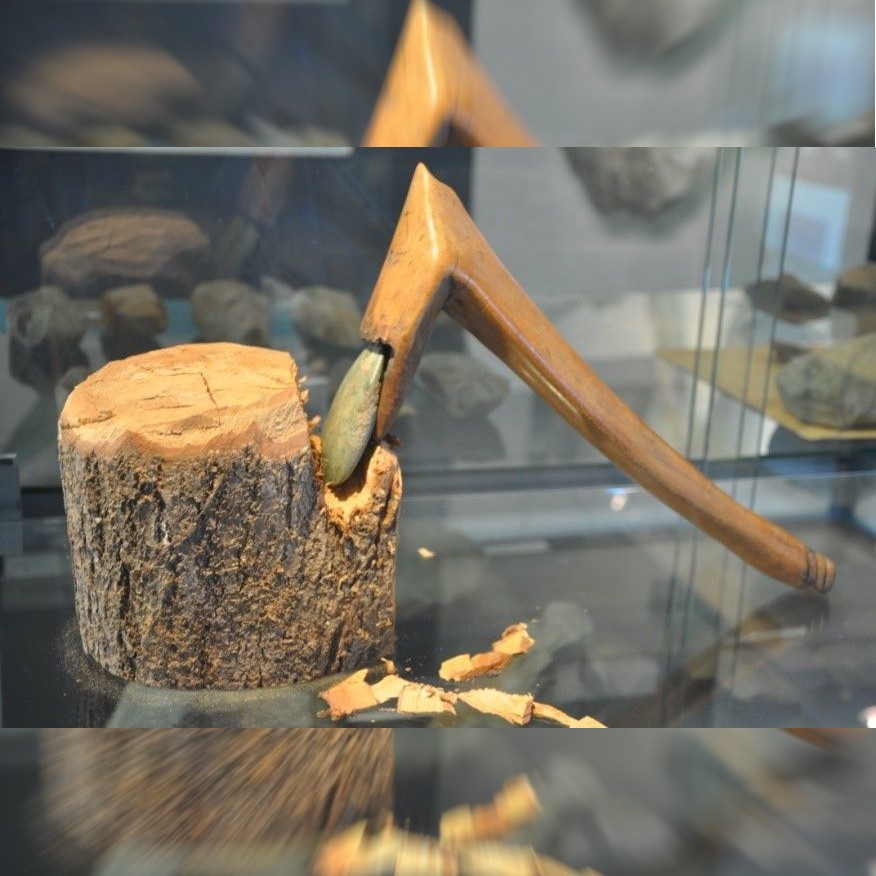LES CHEMINS DE L’ARCHéoLOgie
a quarry as a testimony of prehistorical men’s evolution
Do you know of the Quelfénec hill in Plussulien (22)?
You should know it contains a rock that has unsuspected qualities, a very fine grained metadolerite, that caught the attention of the Neolithic people and contributated to their sedentarisation.
Between 4 200 and 2 000 before common era, they extracted this rock and cut it to make ground stone axes, tool that allowed them to fell trees in order clear forests, creating fields and to build houses.
During these 2 000 years of exploitation, no less than 2 to 3 millions of axes were produced. They were greatly renowned, particularily in northwestern France but also beyond. Archaeologists have indeed found dolerite axes from Quelfennec as far as Belgium, Germany and the south of England, amongst others.
The Quelfenec dolerite outcrop, a departemental site that is open to walkers all year long, still bears the scars of the fabrication of theses axes.
Excavations led by Charles Tanguy Leroux in the 1970’s documented the fabrication process of theses axes, that the Maison de l’Archéologie recounts through a scenography includig the presentation of artefacts from these excavations.
What about the numerous megaliths in the vicinity?
Neolithic people left behind many other traces of their wanderings in the surrounding area of Quelfenec.
Situated at the summit of schistose crests, overhanging the Doualas gorges, the landes de Liscuis necropolis in Laniscat, consists of three gallery graves. These three collective tombs date back to the 4th millennium BCE for the oldest and to the 2nd millennium for the most recent. One cannot exclude the possibilitie that it became the last resting place of some of the quarries who worked in the contemporary Quelfenec dolerite ground stone workshop, only six kilometers from there.

The Saint-Mayeux standing stones, erected in several spots of the town are other witnesses of these times.
The bourg menhir is a 2,64 meters high isolated standing stone, while other standing stones can be distributed in two groups: on one side the Roc’h ar Lein menhir (4,35 m high) was probably part of a larger ensemble including the Mein al Has menhir (3,35 m high) and Bourlousson menhir (3,35 m high); on the other side the Pors Guillo alignment is constituted of three standing stones (ranging from 3,13 m to 4,70 m high), one of which is now laying on the ground and another christianised with the carving of a cross.

Horaires d’ouvertures
Visites libres, en dehors des animations, aux heures d’ouverture de la Mairie :
- Lundi et Vendredi: de 9h à 12h et de 14h à 17h;
- Mardi, Mercredi et Jeudi: de 9h à 12h sauf vacances
Coordonnées
MAISON de l’ARCHEOLOGIE
Mairie de Plussulien
23, rue du centre
22320 PLUSSULIEN
Tél.: 06.66.04.08.47




0 Comments